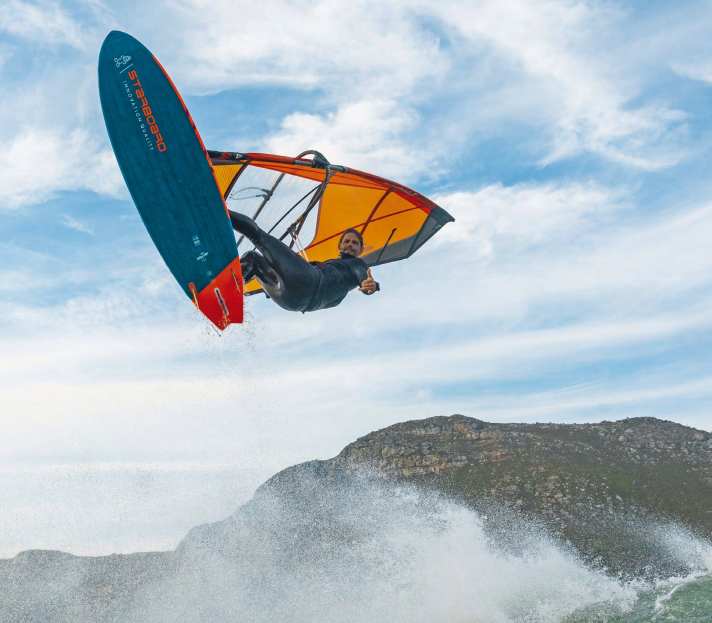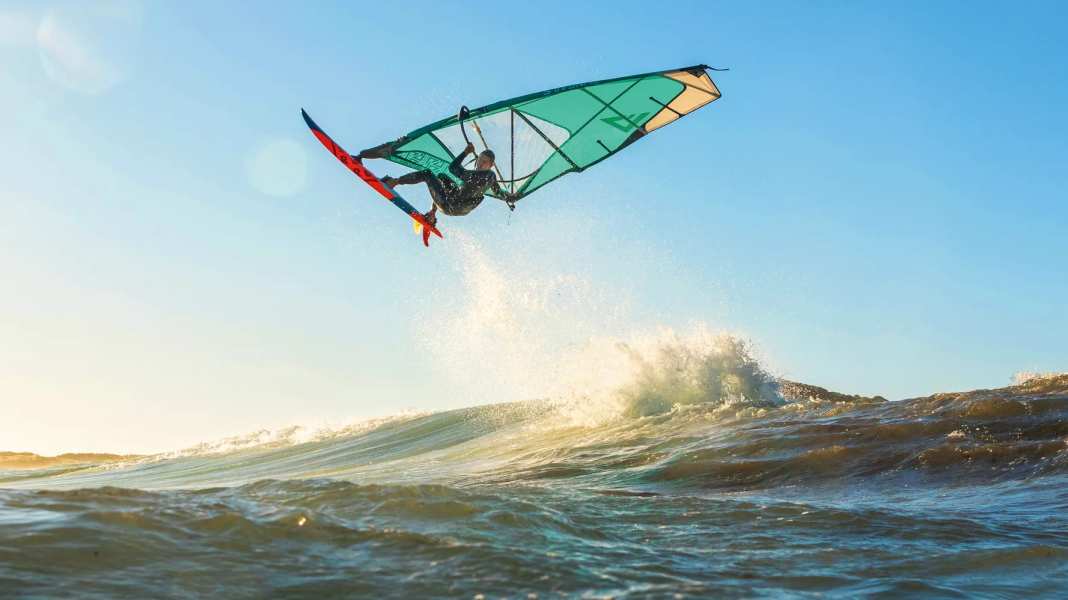
"I don't need to see someone looping to know whether they're ready for it. It's enough for me to watch a normal jump." This statement comes from Josep Pons - a fearless world cupper from Gran Canaria who is respected for his towering front and double loops and is himself a coach for many amateur and professional windsurfers. What Josep is trying to say is that some windsurfers who try the front loop are perhaps blessed with courage, but have deficits in normal jumps. For others, it's the other way round: normal jumps are no problem, but they lack the imagination and sometimes the necessary courage.
If you can jump a normal jump over a small ramp into a glide, you're ready for the loop." (Flo Jung)
In both cases, we would like to give you some help with this riding technique series - and show you how to master the path from a normal jump to a forward loop safely and, above all, step by step.
Simple jumps as a preliminary exercise
To progress from a normal jump to a delayed forward, three steps are important: Firstly, you need to refine your normal jumping technique. If you can jump over a small wave in a controlled manner and land safely, you can in principle also learn the loop. - We lay this foundation in the first part of the series.
Step two is the transition from the normal jump to the first, flat spin loop. Before the first spin loop, however, the most important thing is to get an idea of the movement through suitable preliminary exercises and to lose respect for this jump. The final step is the transition from the spin loop to higher and delayed front loops - the fine art of looping.
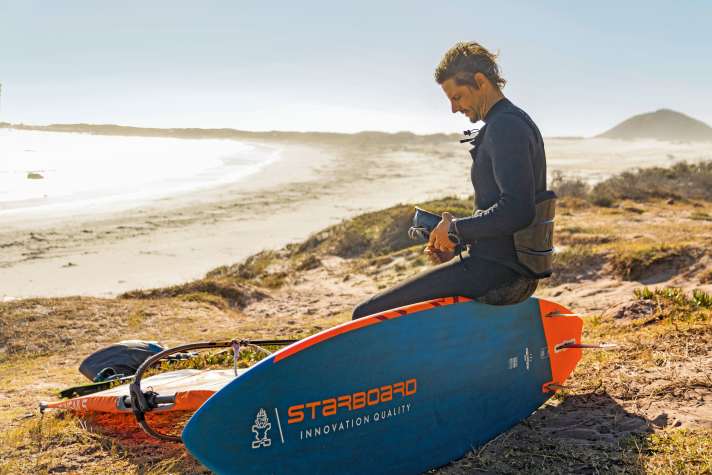
The right material setup for the front loop
For the front loop, the smaller the material, the better. To hone your base and refine your technique for normal jumps, this also applies to a lesser extent. Boards in the "wave, freestyle wave or freemove" categories with less than 115 litres are ideal. If you have the choice of mounting different fin setups on your board, you should ideally screw in a thruster setup to start with. Compared to quad fins, the board then has more ground speed and grip on the tail, which helps noticeably when jumping off - and prevents you from sticking to the water. The straps should not be set too wide for practising, ideally the toes should be completely visible on the inside of the straps.
When choosing the right sail, the following applies: powered up is good, overpowered is bad. Small freemove, freestyle or wave sails are perfect - without camber, of course.
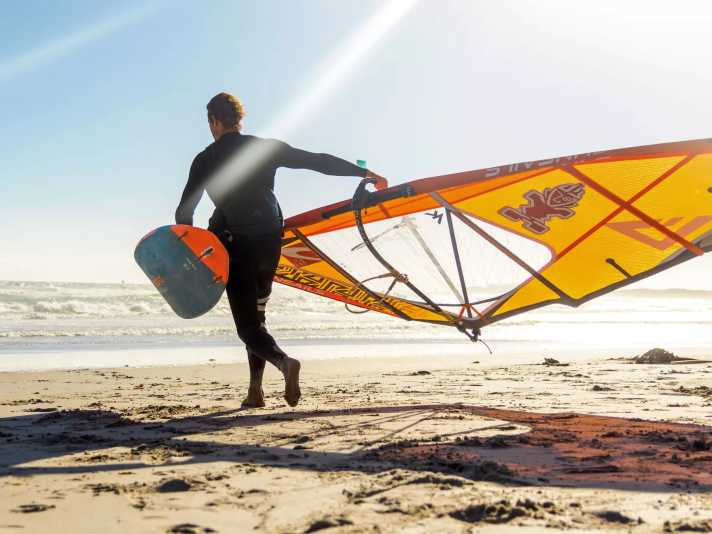
The physics behind the front loop
To understand why cracks seem to float effortlessly in the highest spheres while inexperienced skiers are flying low, it helps to take a look at the physics behind skydiving. The reason for the frequently observed difference in height is not better material, but simply the right technique. The pull in the sail starts at the centre of effort and always acts perpendicular to the sail.
This means that if the sail is relatively upright - as in normal gliding - it develops forward pull. In order to gain height when jumping, the sail must therefore move from its upright position to a horizontal position - comparable to that of an aerofoil. This is achieved by pulling up on the boom, with the arms pulling the boom towards the trapeze. Even when the sail is horizontal, the force is applied vertically to the centre of effort - and is therefore directed upwards. Pros like Flo Jung use this technique for delayed front loops or high back loops to gain the necessary height before rotating.
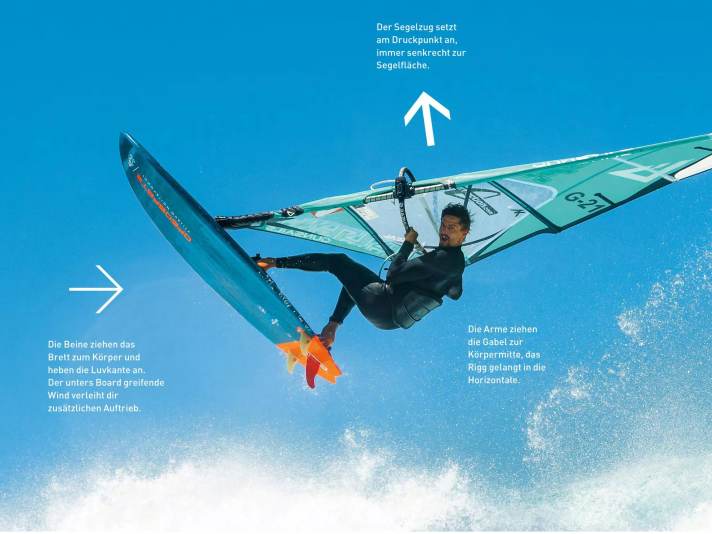
In windsurfing, there are several terms that ultimately describe the different designs and flight curves when jumping. If you jump from flat water or over a small choppy wave, this is commonly referred to as a chop - this is the basis for spin loops jumped from flat water. If you sail over swell or surf waves into the air, this is often referred to as a floaty jump - this is the basis for the front loop. If you use a steep surf wave as a ramp and climb almost vertically upwards, you jump a so-called rocket air - the prerequisite for the stalled forward.
Nevertheless, the underlying technique is similar regardless of whether it's Chophop, Floaty Jump or Rocket Air.
How to do the Floaty Jump or Rocket Air
Preparation phase
The higher the base speed, the higher the jump. Many surfers who want to learn how to jump or loop fail because their base speed is too low. So before you think about your first rotation, try to accelerate properly before jumping off to Chophop, Floaty Jump or Rocket Air - get tight, build up body tension and aim for a small ramp.
Jumping high - explained step by step
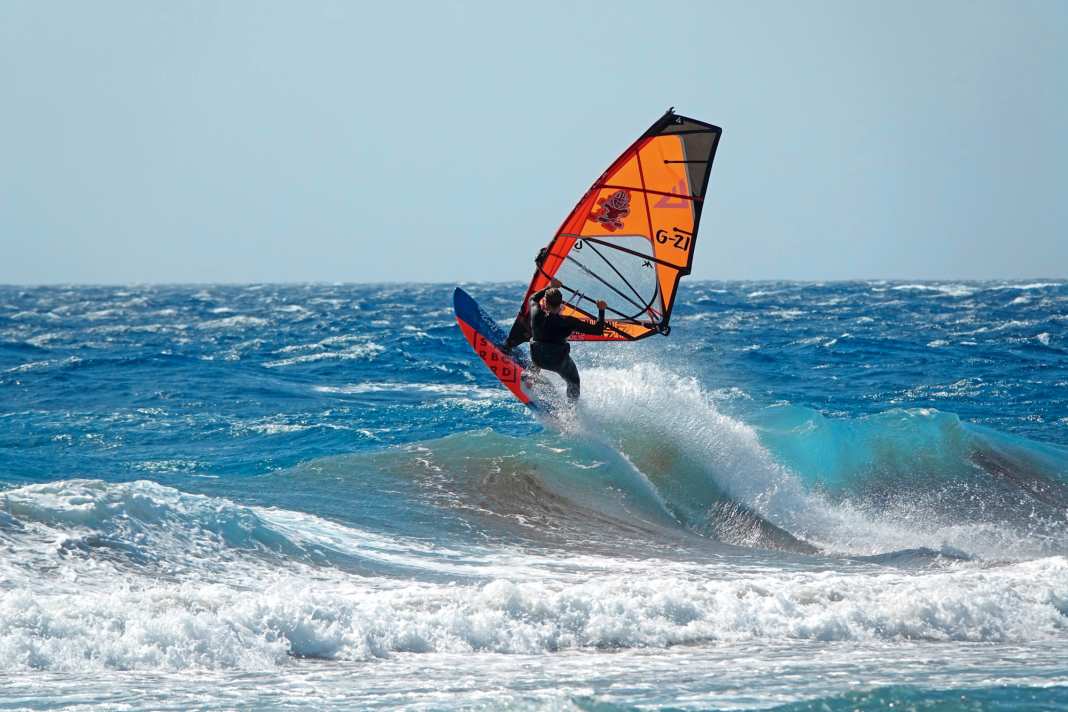





Whether you can land flat and glide on or cushion the jump like a shock absorber - it all depends on the flight curve."
Variant: One-handed jump
If you are confident with normal jumps, you can score a few extra style points with the one-handed version. It is generally recommended to use fairly long harness lines for one-handed jumps - depending on your height, 26 to 32 inches is ideal. Ideally, release the front hand immediately after the jump and ensure a compact body position with the back leg tucked in. In terms of technique, the one-handed jump even has an advantage: because you are hooked in, the rig automatically remains close to the centre of your body - there is no danger of hanging too far under the sail with your arms outstretched.
